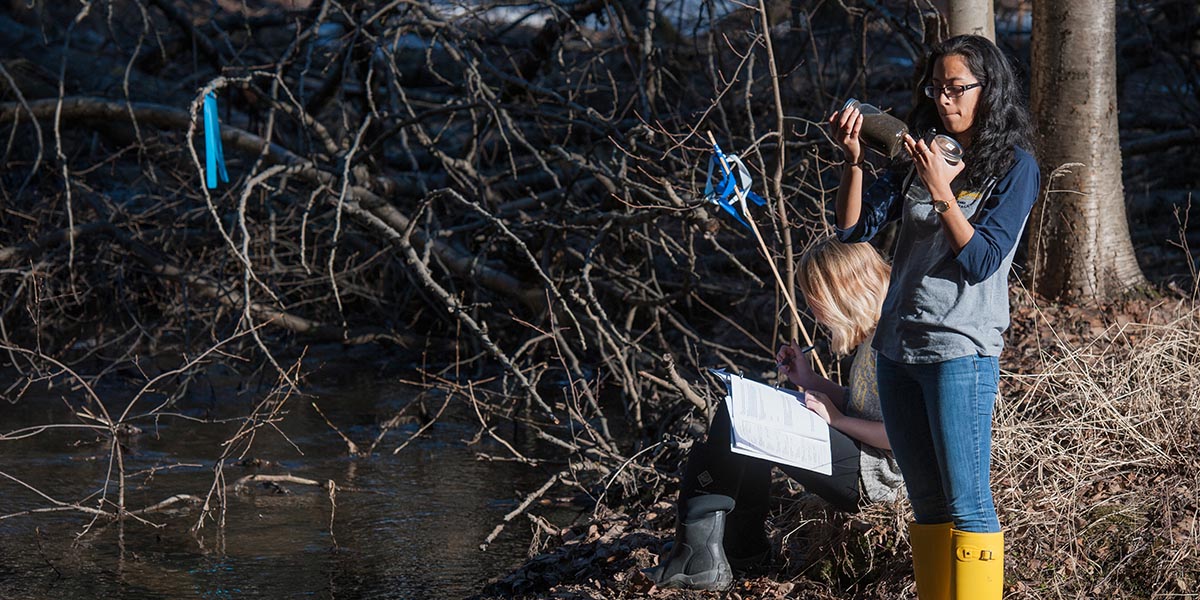Natural Sciences B.S.
Explore the natural sciences bachelor’s degree program at the University of Alaska Anchorage
UAA’s B.S. in natural sciences is a flexible degree program that emphasizes the correlation
between various scientific fields, with options in environmental science and pre-health
professions.
Natural sciences scholarships and financial aid
Visit the UAA Office of Financial Aid to find out ways you can get help paying for college.
Flexible options
This program provides flexibility in fulfilling degree requirements, so you can customize
your plan of study to fit your academic interests and career goals. For example, you
could combine the B.S. in natural sciences with a second major or minor in psychology,
physics or math.
Academic advising
With so many choices, you may not always know what to do next — and that’s okay. Academic
advisors in the College of Arts and Sciences and the Department of Biological Sciences
will help you figure out the best options and classes for you.
Student clubs and professional organizations
Become a member of the American Academy of Developmental Medicine and Dentistry, American
Medical Student Association and American Indian Science & Engineering Society, which
have active student chapters at UAA. You can also join student clubs on campus, including
Pre-Med Club, Emerging STEM Professionals and Wilderness Medicine and Rescue Club.
What can you do with a natural sciences degree from UAA?
Prepare for entry-level jobs in a variety of scientific fields or specialized studies
in graduate or professional school.
Natural sciences graduate programs
- Master of Arts in Teaching
- WWAMI School of Medicine
Natural sciences careers
- Health care
- Teaching
- Environmental science
Natural sciences bachelor’s degree program highlights
Learn to identify, devise and communicate scientific solutions to some of the world’s most common problems, such as global health, mining and oil, food subsistence and climate change.
- Conduct scientific experiments in the lab and in the field. As a natural sciences major, you’ll be able to work on undergraduate research projects with faculty mentors in their labs.
- Apply for your own grant funding through the Office of Undergraduate Research. You can develop and lead your own independent research project with financial support from the Office of Undergraduate Research.
- Receive instruction from experienced faculty who bring innovative teaching practices to classrooms and labs. Their specialties include ecology, evolutionary biology, cell and developmental biology, physiological ecology of plants and animals, genetics and molecular biology.
- Gain first-hand experience using state-of-the-art research and classroom technology. As a natural sciences major, you’ll have opportunities to collaborate with biology, chemistry, geology and physics majors in the ConocoPhillips Integrated Science Building.
- Go beyond the classroom with experiential learning in the field. UAA’s location and proximity to complex ecosystems in extreme environments provide unique opportunities for field research in arctic regions, rural communities and more.
Amazing stories from natural sciences majors
My time was well spent at UAA, where I met and connected with some amazing people. The faculty in the science department are unrivaled in their ability to teach and inspire students, and they gave me the tools, both in the classroom and out, to pursue a graduate degree.
Natural sciences bachelor’s degree program curriculum
Complete a mix of core classes, electives and program requirements for your study
option to prepare for a variety of academic and career pathways in the natural sciences.
What’s the difference between the natural sciences program options?
- The pre-health professions option is designed to meet admission requirements for professional degree programs to help you get into medical, dental and veterinary school.
- The environmental sciences option will help you qualify for graduate school or jobs in the private or public sector.
Top classes for natural sciences majors
- Design and conduct your own science experiment in Principles and Methods in Biology.
- Study microbial processes that affect local and global environments, including biogeochemical cycles and microbe-mineral interactions in Geomicrobiology.
- Learn advanced computational theory and methods to understand complex biological systems in Experiential Learning: Bioinformatics.
- Explore solar, stellar, galactic and extragalactic astronomy in Stars, Galaxies and Cosmology.
















